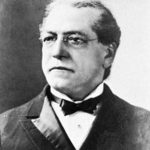Conscription means compulsory enlisting for military service. With several countries engaged in sabe-rattling at the moment, compulsory enlistment may be revived in the present. China, India and Russia are probably right when they claim that any attempt made by the West to contain Assad’s slaughter of his own people in Syria will only invite more radical Muslim attention, as has already happened in Pakistan, Egypt, Afghanistan and Iraq. However much technology is used in modern warfare (a very great deal) troops on the ground are as necessary now as they were in the 13th century, when everybody thought that gunpowder would replace the infantry. Soldiers on the ground can either be volunteers (few on the ground these days) or they must be conscripted.
Conscription was first used in the French Revolution (q.v.). In August 1793 the Committee of Public Safety organised the levée en masse. The decree provided for mobilization of all Frenchmen, but commonsense reduced this for those men between 18 and 25.
Recruited armies to feed the ambitions of Napoleon were provided in 1798. In 1908 a system of brief military training for civilians in time of peace was encouraged by Scharnhorst and Gneisenau, but the system was modified extensively by further reforms between 1813 and 1815. Prussia’s ‘Citizen Army’ (Landwehr) had to be organised to resist Napoleon in 1813, though recruits were mixed with regular soldiers. In Prussia conscripts were made to join the regular army at 20 years old, enter the reserve at 23 and then remain in the Landwehr from age 25 to 40.
The majority of other European nations followed the Prussian example, though it is interesting to note that Prussia did not need much conscription. The system was enlarged to embrace the whole of the German Empire in 1871. Conscription in Austria dated from 1868; in Italy from 1873, Russia from 1874, and France, which had abandoned conscription, re-introduced it in 1818. In Britain it was introduced in January 1916, abolished in 1920, then re-started again (unsurprisingly) in June, 1939. In Britain it was called ‘National Service’, and both men and women were conscripted, the latter to work on the land, in the factories and running canteens etc. as well as serving in uniform. National service meant 24 months away from work, and proved expensive. National service officers, usually at the rank of 2nd Lieutenant only, were permitted, and officer cadet training centres were established at Eaton Hall and Mons, Aldershot. National servicemen could become Lance Corporals (1 stripe on the arm)and Full Corporals (2 stripes) and their equivalents in Cavalry and artillery regiments, but Sergeants (3 stripes) only in the Educational and Intelligence branches. The Government announced the end of national service in 1957, but in practice there were still national servicemen and women around, un-demobbed, in the last months of 1960. Conscripts fought and often died in the 2nd World War, Malaya, Korea, Laos, Vietnam, Cambodia, Somalia, Egypt and many other places, but the brief war between Britain and Argentina fought in the Falkland Islands was dignified by conscipts only on the Argentine side. All British forces were regular. The United States used conscription to provide manpower for their wars in Korea and Vietnam, though not in Afghanistan.
Acceptance of forced conscription was generally acceptable in most countries, though it made holes in the economy, and forced young people to start working two years later than is normal. In Spain conscription continued for years after it should have stopped, but in the final months conscripts were only expect to train/serve for less than a year. Switzerland still has an excellent system, in which all men until age fifty-five must return to training for a very brief period every year of their life. This system, not unpopular in Switzerland, ensures that an adequately trained army is permanently on hold in case the country’s neutrality should be menaced.










Leave A Comment